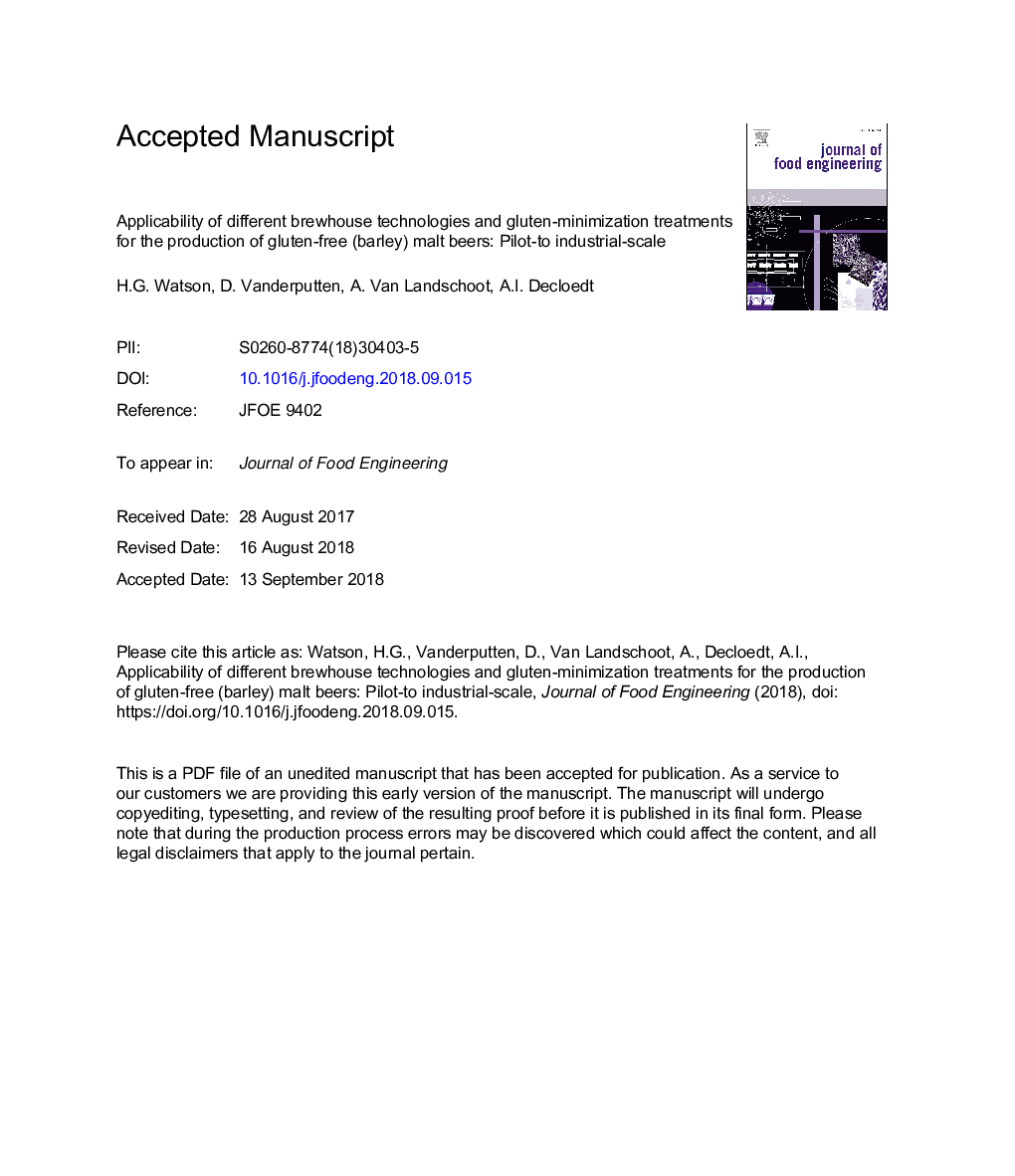| Article ID | Journal | Published Year | Pages | File Type |
|---|---|---|---|---|
| 11012694 | Journal of Food Engineering | 2019 | 27 Pages |
Abstract
The fate of gluten proteins and (poly)peptides throughout the brewing process of reference and gluten-minimized all-malt beers was monitored on both pilot-scale and industrial-scale. Common process steps such as wort separation, cooking, wort and beer clarification already significantly reduce the mass of gluten proteins (72-99%). Nevertheless, gluten derived (poly)peptides remained present at high concentrations in the final reference beers (58-397â¯ppm). A lauter tun, with course husk material as filter bed, showed to be more effective in reducing the mass of gluten proteins than a mash filter (33% vs. 18%). The mass of gluten proteins and (poly)peptides could be further significantly reduced (16-89% and 33-81% respectively) depending on the use of tannins, AN-PEP (Prolyl-endopeptidase from Aspergillus niger) and silica gel. To render all-barley malt beers gluten-free (â¤20â¯ppm) (EC No. 41/2009, 2009) gluten-minimization treatments with AN-PEP and silica gel were combined successfully; these beers contained <5â¯ppm gluten proteins and <10â¯ppm gluten (poly)peptides.
Keywords
Related Topics
Physical Sciences and Engineering
Chemical Engineering
Chemical Engineering (General)
Authors
H.G. Watson, D. Vanderputten, A. Van Landschoot, A.I. Decloedt,
